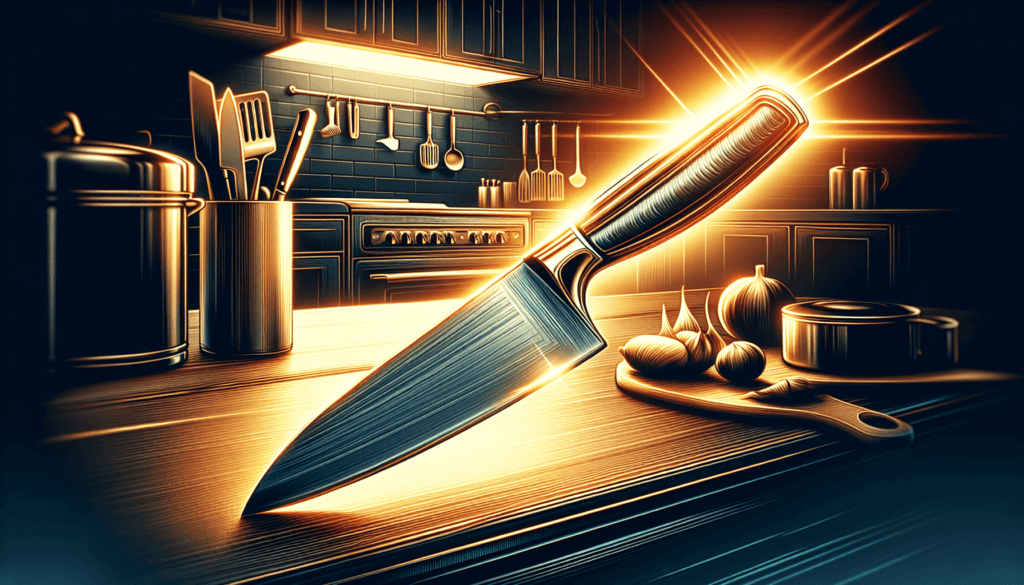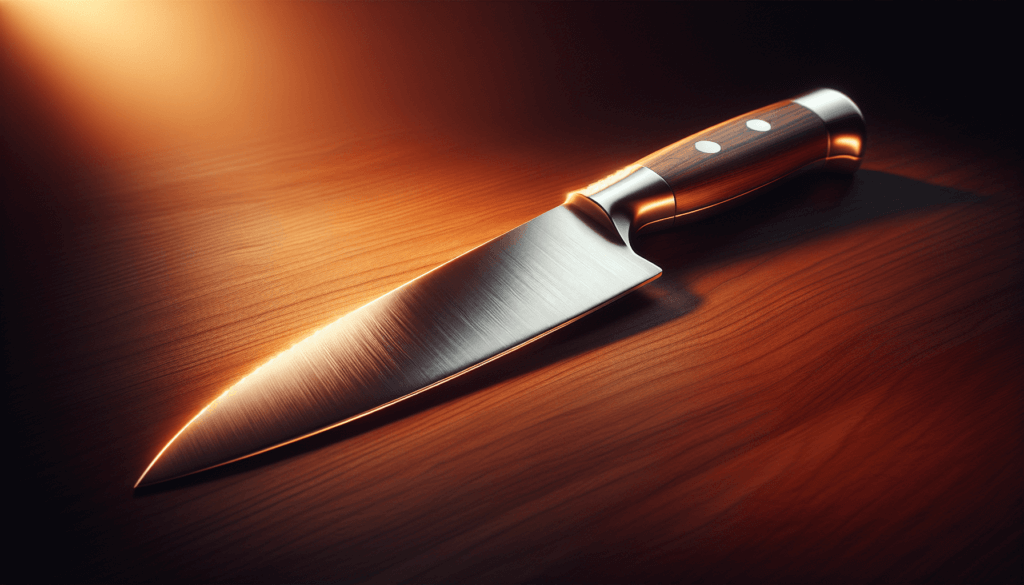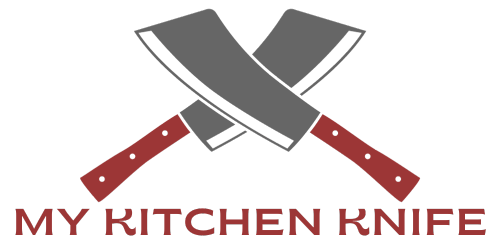Ready to upgrade your kitchen knives? Look no further! In this article, you will discover expert tips on how to shop for kitchen knives online like a pro. With the convenience and limitless options available, online shopping can be overwhelming, especially when it comes to finding the perfect set of kitchen knives. But fear not! By following these simple yet effective strategies, you’ll be able to navigate through the online marketplace with ease, ensuring that you make a well-informed and satisfying purchase. So, get ready to sharpen your shopping skills and elevate your culinary prowess in no time!
Understanding Different Kitchen Knife Types
When it comes to kitchen knives, there are various types that serve different purposes. Understanding the different knife types will help you make an informed choice when shopping for kitchen knives online.
Chef’s Knife
The chef’s knife is perhaps the most versatile knife in the kitchen. With a broad, sharp blade and a slightly curved edge, it is perfect for slicing, dicing, and chopping an array of ingredients. Whether you’re preparing vegetables or cutting through a tough piece of meat, a chef’s knife will be your go-to tool.
Paring Knife
A paring knife is a small, nimble knife with a narrow blade. It is primarily used for peeling fruits and vegetables, deveining shrimp, and creating intricate cuts. If you need precision and control while working on smaller tasks, a paring knife is essential in your kitchen.
Utility Knife
Somewhat smaller than a chef’s knife, a utility knife is designed for general everyday tasks in the kitchen. It is perfect for slicing sandwiches, cutting small fruits, and trimming meat. If you’re looking for a knife that combines the versatility of a chef’s knife with the maneuverability of a paring knife, a utility knife is a great choice.
Bread Knife
A bread knife features a long, serrated blade that effortlessly cuts through bread without squishing or tearing it. It is also useful for slicing through other delicate food items with a hard exterior and soft interior, such as tomatoes or cake. If you enjoy baking or regularly have crusty loaves of bread, a bread knife is a must-have.
Santoku Knife
The santoku knife originated in Japan and has gained popularity worldwide. It features a shorter, wider blade with a flat edge and often has hollow indentations on the side. The santoku knife excels at precise slicing, dicing, and mincing tasks, making it a favorite among both professional chefs and home cooks.
Cleaver
A cleaver is a heavy-duty knife designed for tasks that require brute force. Its thick, rectangular blade can handle tough cuts of meat, bones, and even light chopping duties. If you frequently work with large cuts of meat or enjoy breaking down poultry, a cleaver should be in your knife collection.
Consider the Blade Material
The blade material of a knife plays a significant role in its performance, durability, and maintenance. Here are a few options to consider when shopping for kitchen knives online.
Stainless Steel
Stainless steel is a popular choice for kitchen knives due to its corrosion resistance and affordability. It is easy to maintain, resists staining, and offers decent edge retention. Look for knives made from high-quality stainless steel for optimal performance and longevity.
Carbon Steel
Carbon steel blades are favored by professional chefs for their sharpness and ability to hold an edge. They require more maintenance since they can rust if not dried properly after use. However, with proper care, a carbon steel blade can offer exceptional cutting performance.
Ceramic
Ceramic blades are known for their sharpness and resistance to staining and rust. They do require extra care, as they are brittle and can chip or break if mishandled. Ceramic knives are best suited for slicing fruits, vegetables, and boneless meats, and are not recommended for heavy-duty tasks.
Damascus Steel
Damascus steel blades are known for their beautiful patterns and exceptional cutting ability. These blades are made by layering different types of steel, resulting in a distinctive aesthetic. While they can be quite expensive, Damascus steel knives are highly sought after by knife enthusiasts and professionals.

Evaluating the Blade Length
The length of a knife blade affects its versatility and ease of use. Consider your needs and preferences when deciding on the blade length for your kitchen knives.
Choosing the Right Size for Your Needs
The ideal blade length depends on the types of food you usually prepare and your comfort level in handling different sizes of knives. If you primarily cook for yourself or a small family, a blade length of around 8 inches may be sufficient. However, if you often entertain guests or work with larger cuts of meat, a longer blade between 10 to 12 inches may be more suitable.
Common Blade Lengths
Knife blades generally range from 6 to 14 inches in length. Here are the common blade lengths and their recommended uses:
- 6 to 8 inches: Ideal for paring and utility knives, used for small, detailed tasks.
- 8 to 10 inches: Suitable for chef’s knives and santoku knives, providing versatility and maneuverability for various kitchen tasks.
- 10 to 12 inches: Preferred for slicing and carving knives, perfect for larger cuts of meat and roasts.
- 12 to 14 inches: Mostly used in specialty knives for specific purposes, such as slicing smoked salmon or large fish fillets.
Determining the Knife Handle
The handle of a knife plays a crucial role in providing comfort, control, and stability during use. Consider the following factors when choosing a knife handle for your kitchen knives.
Material
Knife handles come in a variety of materials, including wood, plastic, metal, and composite materials. Each material has its own advantages and considerations. Wood handles offer a classic look and a comfortable grip but may require more maintenance. Plastic handles are generally easy to clean and lightweight. Metal handles provide durability but may get slippery when wet. Composite handles combine different materials to provide a balance of comfort, durability, and grip.
Ergonomics
The ergonomics of a knife handle affect how comfortable it feels in your hand and how securely you can hold the knife. Look for knives with handles that fit comfortably in your hand, providing a firm grip and minimizing strain during extended use. The shape and contours of the handle should allow for a natural and secure grip, reducing the risk of accidents or hand fatigue.
Balance
The balance of a knife refers to how the weight is distributed between the blade and the handle. A well-balanced knife feels comfortable and stable in your hand, allowing for precise control. When shopping for kitchen knives online, consider the balance between the blade and handle and choose one that suits your preference and style of cooking.

Examining the Knife Tang
The tang of a knife refers to the portion of the blade that extends into the handle. The type of tang affects the overall strength, balance, and durability of the knife.
Full Tang
A full tang knife has a blade that extends fully through the handle. This design provides maximum strength and stability, ensuring that the blade and handle are securely connected. Full tang knives are often preferred by professional chefs and culinary enthusiasts for their durability and balance.
Partial Tang
A partial tang, also known as a rat-tail tang, extends only partially into the handle. While this design may save on cost and weight, it can result in a less stable knife. However, well-designed partial tang knives can still offer good performance and durability for everyday kitchen tasks.
Understanding Knife Edge Types
The type of edge on a knife blade affects its cutting performance, versatility, and maintenance requirements.
Straight Edge
A straight edge is the most common type of knife edge, featuring a sharp, continuous edge from the base of the blade to the tip. Knives with straight edges are excellent for precise slicing and chopping tasks and can easily be sharpened with a sharpening stone or honing rod.
Serrated Edge
A serrated edge consists of a series of small, scalloped teeth along the blade. This type of edge is ideal for cutting through foods with tough exteriors and soft interiors, such as crusty bread or tomatoes. Serrated edges offer excellent grip and stay sharp for longer periods but require specialized sharpening techniques.
Hollow Edge
A hollow edge, also known as a granton edge, features scalloped recesses or indentations on each side of the blade. These indentations reduce the surface area of the blade, minimizing friction and preventing food from sticking to the blade. Hollow-edge knives are often used for precision slicing, particularly with delicate ingredients like smoked salmon or sushi.

Considering Maintenance and Care
Proper maintenance and care are essential for keeping your kitchen knives in peak condition. Consider the following factors when choosing knives that meet your maintenance preferences.
Sharpening Options
To maintain the sharpness of your knives, you’ll need to invest in sharpening tools or services. Traditional sharpening stones or honing rods are commonly used to keep straight edge knives sharp. Serrated and hollow-edge knives may require specialized sharpening tools or professional services. When shopping for kitchen knives online, consider the ease of sharpening and the availability of relevant sharpening tools.
Dishwasher Compatibility
While many kitchen knives are advertised as dishwasher-safe, it is generally recommended to hand wash them to preserve their condition. Dishwashers expose knives to potentially damaging elements such as heat, harsh detergents, and constant movement. Consider your preference for dishwasher cleaning, but keep in mind that hand washing will help prolong the lifespan of your knives.
Storage Solutions
Proper storage is crucial to prevent accidents and maintain the quality of your kitchen knives. Knife blocks, magnetic strips, blade covers, and knife rolls are common storage options. Choose a storage solution that suits your kitchen space, keeps your knives protected and organized, and allows for easy access.
Researching Brands and Reviews
When shopping for kitchen knives online, it’s worth researching different brands and reading customer reviews to ensure you’re purchasing high-quality knives that meet your needs.
Popular Kitchen Knife Brands
There are numerous reputable kitchen knife brands to choose from, each with its own strengths and specialties. Some popular brands known for their quality and craftsmanship include Wusthof, Zwilling J.A. Henckels, Shun, Victorinox, and Global. These brands often offer a wide range of knife types, materials, and price points to suit different preferences and budgets.
Customer Reviews
Customer reviews provide valuable insights into the performance, durability, and overall satisfaction of a particular knife. Take the time to read through reviews from verified purchasers to get a better understanding of any potential pros and cons associated with the knives you’re considering. Pay attention to consistent feedback and look for reviews from individuals with similar cooking habits and needs as your own.

Comparing Prices and Budgeting
Setting a budget and comparing prices will help you make an informed decision when shopping for kitchen knives online.
Setting a Budget
Kitchen knives come in a wide range of prices, from budget-friendly options to high-end luxury knives. Determine how much you’re willing to invest in your knives based on your needs, preferences, and frequency of use. Remember that quality knives can be a long-term investment, so it may be worth spending a bit more for better performance and durability.
Considering Value for Money
When comparing prices, consider the value for money you’ll be getting from a particular knife. Look for knives that offer a balance between quality, durability, and affordability. Keep in mind that expensive knives aren’t always the best choice if they don’t meet your specific cooking needs. Look for knives that offer the best combination of features and performance within your budget range.
Utilizing Online Shopping Tools and Features
When shopping for kitchen knives online, take advantage of the various tools and features provided by online retailers to enhance your shopping experience.
Product Filters and Sorting
Online retailers often provide filters and sorting options to help you narrow down your choices based on specific criteria. Use these tools to filter by price range, brands, blade materials, blade lengths, and other preferences. Sorting options such as customer ratings or price from low to high can also help you prioritize your selection.
Zoom and Image Viewing
Make sure to utilize the zoom and image viewing features provided by the online retailer. These features allow you to examine the knife blade, handle, and other details up close. Zooming in on product images will help you assess the craftsmanship, construction, and overall quality of the knife before making your purchase.
Customer Q&A and Reviews
Take advantage of the customer Q&A section to get answers to any specific questions you may have about a particular knife. This section often provides valuable insights into the functionality and performance of the knife from customers who have already purchased it. Additionally, reading through customer reviews can give you a better understanding of the overall satisfaction and experiences of other individuals who have bought the knife you’re considering.
With these comprehensive insights into kitchen knife types, blade materials, blade lengths, handle options, tang types, edge styles, maintenance considerations, brand research, pricing comparisons, and online shopping features, you are now equipped to shop for kitchen knives online like a pro. Happy knife shopping and enjoy the wonderful world of cooking!



